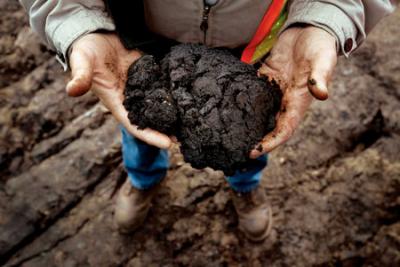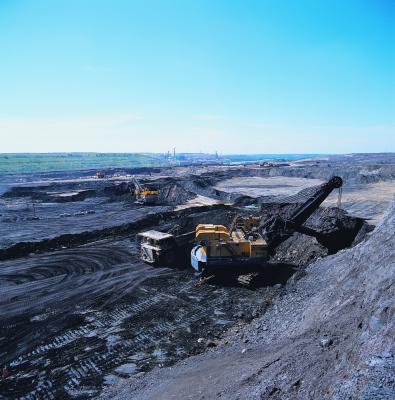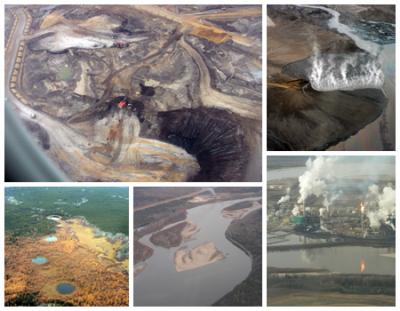Or to put it another way, Canada is addicted to the American Oil Dollar. The United States currently receives 99 percent of Canadian crude oil exports. While this accounted for only 7 percent of U.S. daily consumption in 2005, tar sands production and development has grown dramatically in recent years, and more than $100 billion of investment has been announced for development over the next decade. Unfortunately Canada is running out of traditional oil sources and has started to develop the huge tar sands deposits in western Canada.
Canadian tar sands deposits hold an estimated 1.7 trillion barrels of crude oil, second in the world only to Saudi Arabia, but the devastating environmental impact of mining them far exceeds that of conventional oil, according to the September/October issue of World Watch magazine. The energy-intensive process of extracting crude bitumen from the mixture of sand, clay, and silt releases up to three times more greenhouse gas pollution than conventional oil extraction and is wreaking havoc on local forests, wildlife, fresh water resources, and air quality, Dan Woynillowicz writes in “Tar Sands Fever!” “Everything about the tar sands is big,” Woynillowicz writes, “most significantly its global warming and environmental implications-leading some to now describe the tar sands as ‘Canada’s dirty secret.'”
The tar sands deposits underlie more than 140,000 square kilometers of relatively pristine Canadian boreal forest, which accounts for one-quarter of the world’s remaining intact forests. If currently planned tar sands development projects go forward, approximately 3,000 square kilometers of boreal forest could be cleared, drained, and strip-mined. The remaining 137,000 square kilometers stand to be compromised by the extraction process used for deeper reserves, which requires injecting high-pressure steam into the ground to soften the bitumen so it can be pumped to the surface.
The mining of the tar sands is also diverting streams and rivers and draining large amounts of water from the nearby Athabasca River, the primary source of the water used in the separation process. Tar sands mining operations withdraw 2 to 4.5 barrels of fresh water from the river for every barrel of oil produced, threatening the sustainability of local subsistence and commercial fisheries and the habitat of a wide variety of wildlife.
Referring to the U.S. “addiction to oil,” Woynillowicz observes: “Most of us regard addictions as inherently unhealthy and admission of the problem as the first step toward getting clean. In this case, however, U.S. policy has simply been to seek increased oil imports from more reliable sources closer to home-in effect, to replace distant and unstable dealers with one from the neighborhood.”



where is the place of oil sand
Fascinating views and thoughts. We don’t take an editorial opinion at 3Ceco.com but if you have further views you would like to express we’re interested in tar sands. Jobs, lives, families…carbon, Kyoto commitments. It’s complex and a passionate issue. Great coverage.
I bet you think man is responsible for all “bad” stuff that happens in the world too, right? Our cars polute the environment (all cars in the world put together don’t create a fraction of the green house gasses that one volcanic eruption makes, not to mention they’re have been an increase in those lately so you’re seeing you’re beloved CO2 levels eaking upward…….), all of the impact humans make to our oceans is virtually consumed BY the oceans, and the only real criminals to this planet are natural events.
Do you folks ever go outside, or just sit behind a desk all day?
WAKE UP PEOPLE, don’t play second fiddle to the idiots trying to make you live in and be afraid of the world you love.